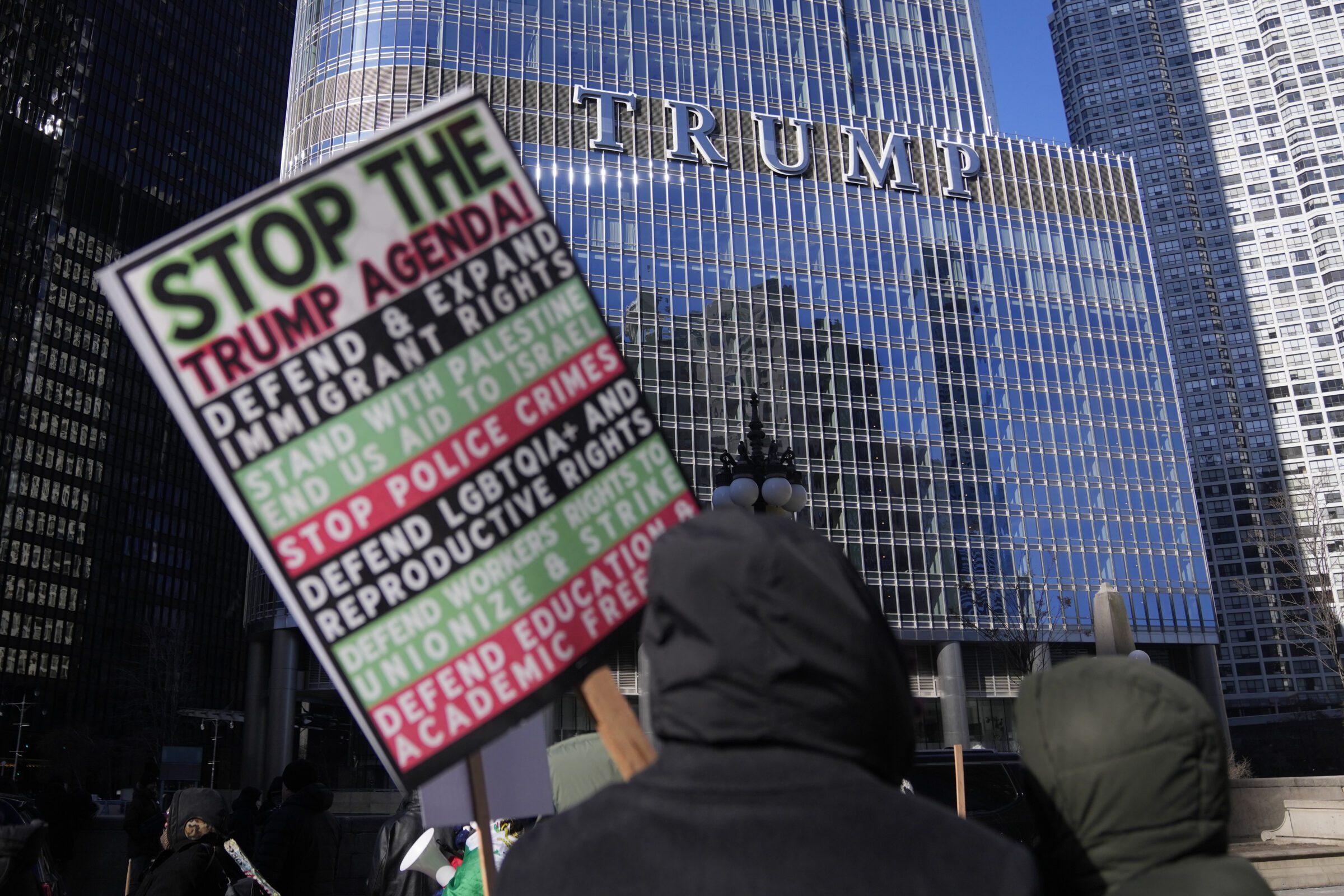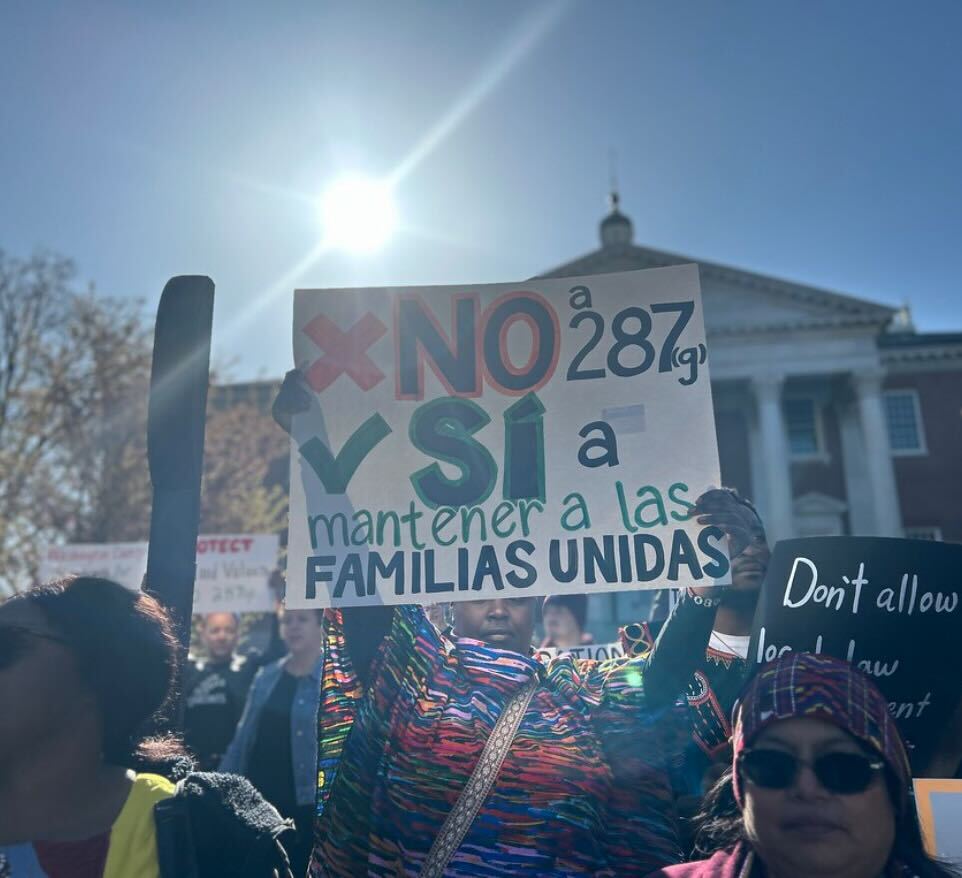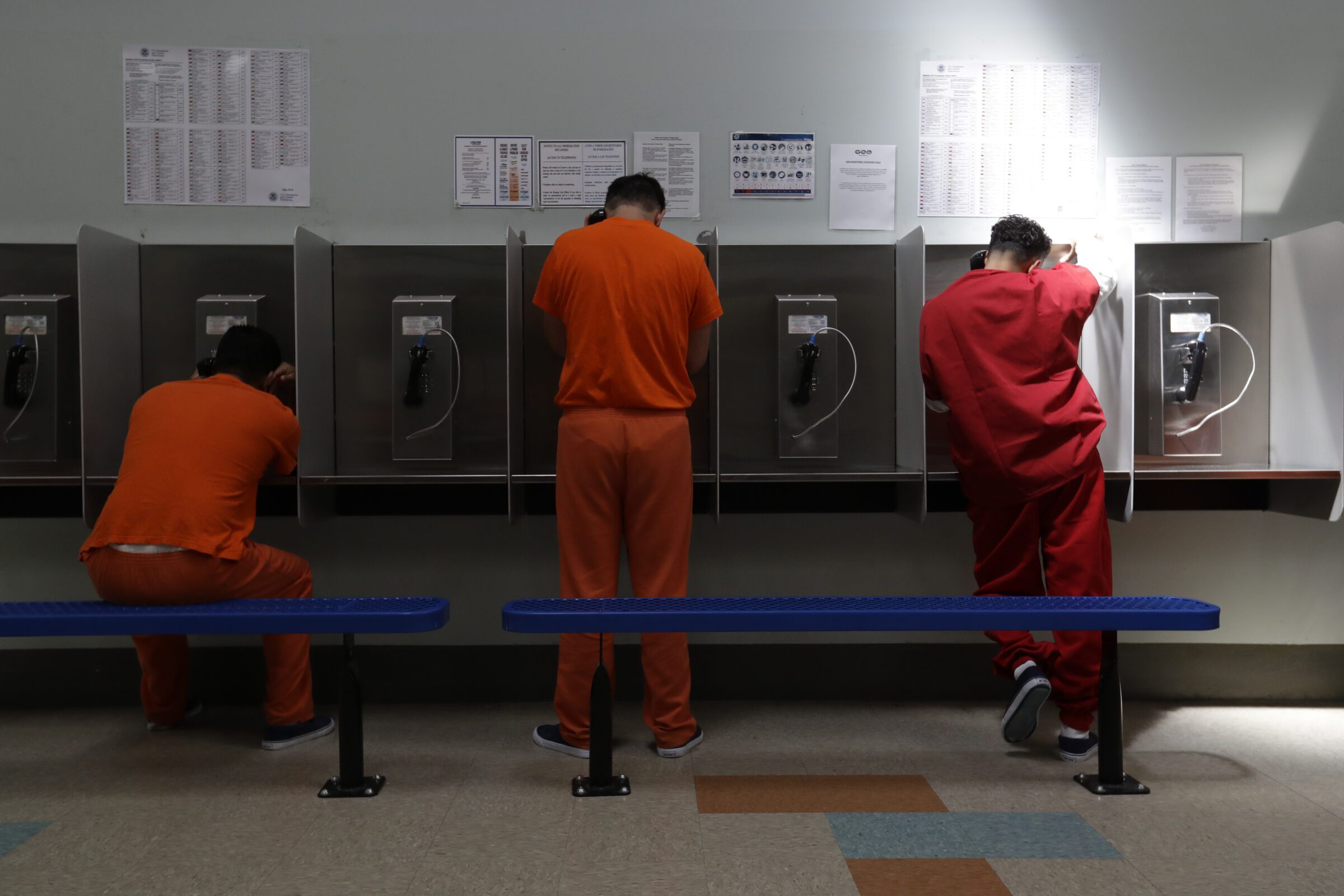How Volunteer Patrols Are Working to Protect San Diego Immigrant Communities From ICE
In response to mass deportation threats and mixed messages from county leaders on federal cooperation, San Diego organizers are taking action to inform residents of ICE activity.
| April 25, 2025
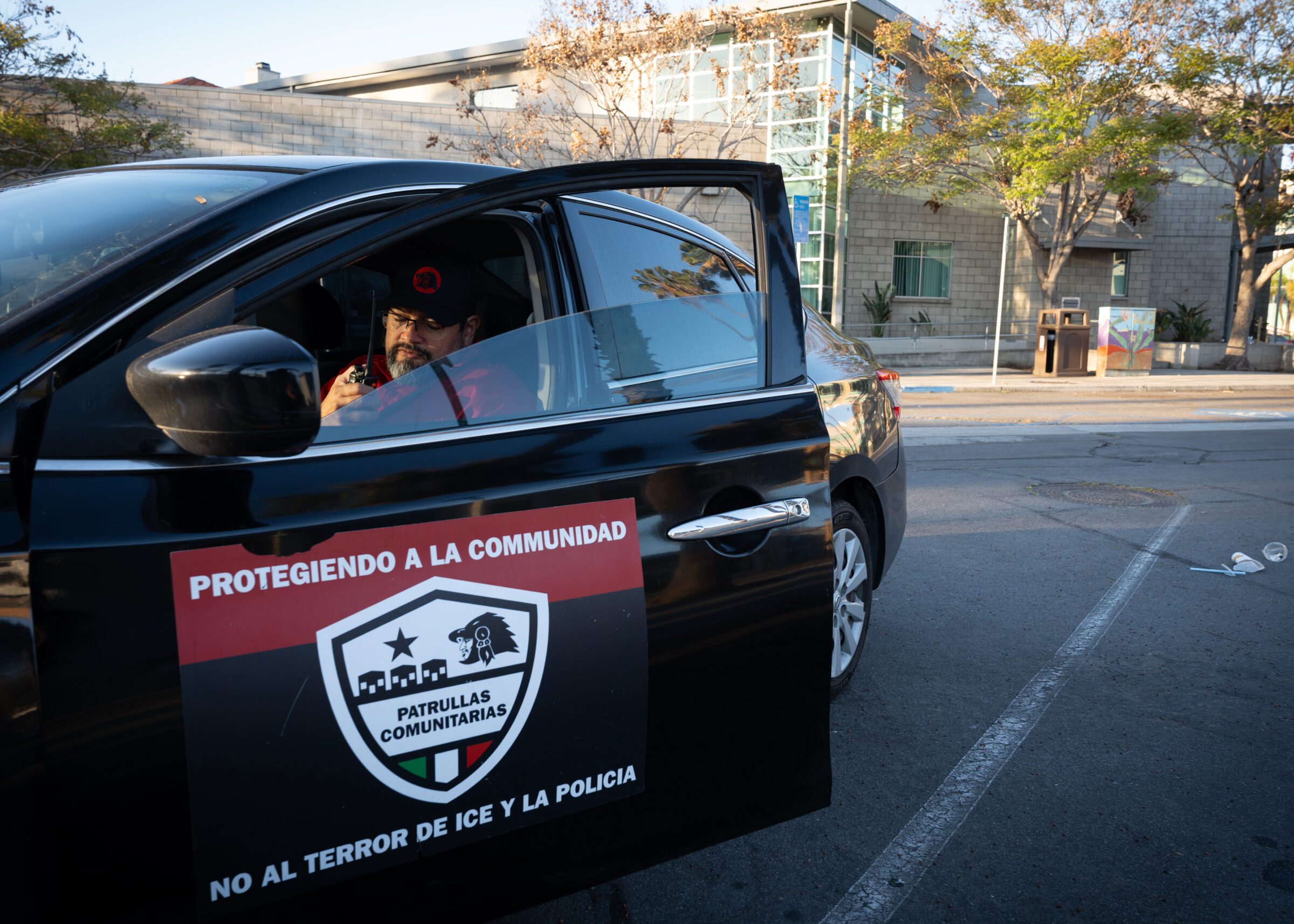
In the early-morning twilight on a cool Friday in April, a half dozen people gathered in a small parking lot in the San Diego neighborhood of City Heights. It was quiet, before the working-class neighborhood had come to life with the bustle of traffic, commuters, and the sounds of children walking to school.
One of the men there, Benjamin Prado, grabbed a bullhorn and a radio. “You all have your walkies, right?” he asked the others as he got into a car. Its rear bumper had a decal reading in bold Spanish, ‘Patrullas Comunitarias’ or ‘Community Patrol’. The group nodded. They agreed to meet back up later that morning before dispersing in several cars that disappeared in the predawn darkness to carry out their mission of patrolling the neighborhood in search of suspicious vehicles and activity.
Prado and his team aren’t law enforcement, private security, or even neighborhood watch, but members of Unión del Barrio (UdB), an independent Chicano political organization. The group is working to warn the surrounding San Diego community of potential U.S. Immigration and Customs Enforcement (ICE) activity in the area, offering a first line of defense for families at risk of President Trump’s plan to enact mass deportations throughout the country.
During the Friday patrol, Prado drove slowly down quiet neighborhood streets lined with small homes and apartment complexes. UdB’s community patrol members are specifically trained to look out for signs of undercover law enforcement vehicles—usually U.S.-manufactured vehicles such as Dodge Durangos, Ford Explorers, and Chevy Impalas with dark-tinted windows that stand out from others in the neighborhood. Trucks and SUVs with no license plates and with lights on the grill and visor are other hallmarks that volunteers look out for.
“There’s always an agent inside,” Prado said, scanning the streets for suspicious vehicles. “They usually operate in pairs, sometimes you can also see in the backseat, there’s like a cell or detention cage.”

Since Trump’s reelection last fall, Unión del Barrio says it has conducted at least 60 community patrols in San Diego County and encountered ICE agents on eight different occasions in various communities such as Barrio Logan, Shelltown, City Heights, Linda Vista, El Cajon, National City, Southeast San Diego, and even in places in the region’s North County like Vista and Escondido. Once the patrols confirm the presence of ICE, Prado says that the group jumps into action to inform the community. “We have GoPros that we use to document the encounter,” he said. “We’ll radio into the team that we have a suspected vehicle, then we provide our location, and then we go live-stream it on social media. We also have a person use a bullhorn to inform the community that there is ICE activity.”
Prado says the patrol volunteers have come into contact with different agencies in the past, including DEA, FBI, ICE, and CBP. He says they never interfere with the agents’ work. Rather, patrol members simply observe and report what they see.
“Sometimes we’ll just ask, ‘Are you law enforcement?” he said. “They’ll usually just say federal agent. It does give us an indicator that it’s some kind of law enforcement. More often than not, we make the assessment to confirm that there is some kind of federal law enforcement, and we’ll announce it to the community.”
As the federal government ramps up its deportation efforts, UdB’s patrols have coincided with San Diego’s own efforts to enact policies that restrict local officials’ cooperation with the federal immigration agencies. In December 2024, the San Diego County Board of Supervisors voted 3-1 to restrict the use of county resources for federal immigration enforcement. The policy notably bars San Diego County agencies, including the San Diego County Sheriff’s Office, from coordinating with immigration agents. The county’s policy requires a federal judge to sign off before the Sheriff’s Office can transfer inmates to ICE. It also prohibits cooperation on lower-level federal civil immigration enforcement, such as cases where migrants overstay their visas. An effort to repeal the policy was defeated in March.
The policy, however, has put county leadership at direct odds with the San Diego County Sheriff. In a defiant statement released in December 2024, the San Diego County Sheriff’s Office rebuked the Board of Supervisors and said it would not adhere to the policy: “The Board of Supervisors does not set policy for the Sheriff’s Office. The Sheriff, as an independently elected official, sets the policy for the Sheriff’s Office. California law prohibits the Board of Supervisors from interfering with the independent, constitutionally and statutorily designated investigative functions of the Sheriff, and is clear that the Sheriff has the sole and exclusive authority to operate the county jails.”
In a separate statement, San Diego County Sheriff Kelly Martinez said, “As Sheriff, I will continue to follow state law.”
Some immigration advocates say Martinez might have already violated California state sanctuary laws by transferring an inmate in the local jail system to ICE custody. Under SB 54, known as the Values Act, local California jails can transfer inmates to ICE only if they have been convicted of certain felonies in the last 15 years or certain misdemeanors in the last five.
The law, which requires agencies that transfer people to ICE to publish annual reports, showed that in 2023 a man who had been arrested for vandalism in late 2022 was eventually transferred to ICE a month later. The man had previously been convicted of assault, but in 2002—outside of the 15-year parameter for ICE transfers according to California’s law.
Immigrant rights advocates argue that the case is not only a blatant example of an immigrant being punished twice for the same offense, but is indicative of the San Diego County Sheriff’s ardor to cooperate with ICE—regardless of whether a particular case actually warrants it. The San Diego County Sheriff’s Office operates all seven of San Diego County’s public detention facilities.
In-fighting between the county and sheriff over cooperation with ICE has left many San Diego residents questioning the validity of the city’s ‘sanctuary’ status. Amid uncertainty and paranoia that fluctuates with each passing day, UdB organizer Adriana Jasso says that the group’s community patrols have been bringing communities together. “The community is very appreciative, we are very fortunate to have a very good following on social media platforms. People are very vigilant about what kind of report we have every day,” Jasso said.
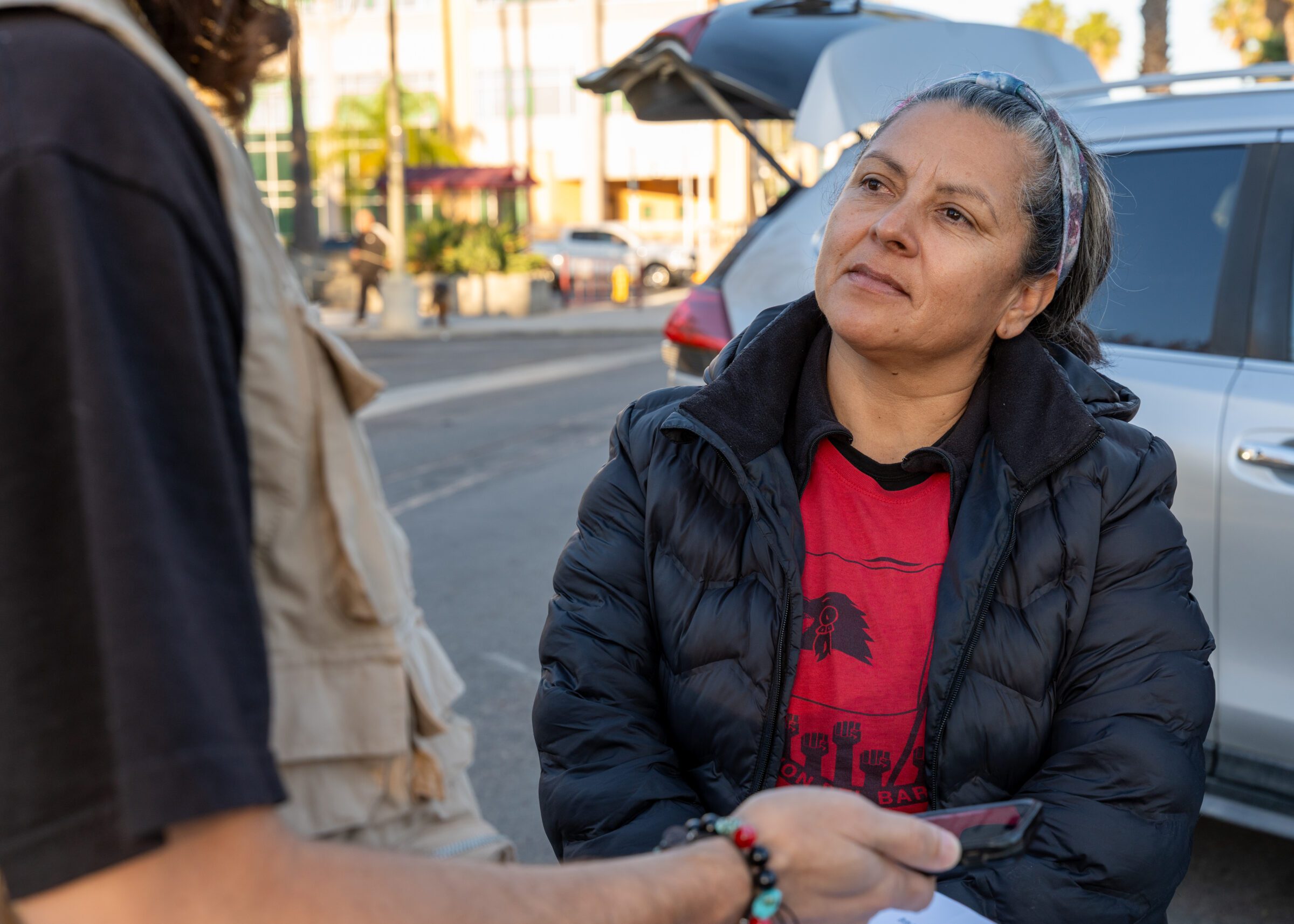
UdB’s patrols are in keeping with the organization’s mission, dedicated to the “struggle on behalf of ‘La raza’ living within the current borders of the United States.” By keeping community members informed about federal activity, they offer residents a chance to assert their rights and keep themselves safe from both detention and family separation that have intensified over the last several years.
“Part of our goal and objective of these community patrols is to create a mechanism for community-level self-defense of our working-class neighborhoods against different forms of migrant police terror,” Prado explained.
UdB has been active in political fights since its founding in 1981, in San Diego, Los Angeles, and throughout Southern California. Over its four-decade history, UdB has led struggles to defend the rights of workers, prisoners, women, youth; and has launched numerous independent electoral campaigns in neighborhoods all across California. But central to its mission has been leading resistance against border patrol and police violence. The group first started the community patrol program more than thirty years ago in response to police harassment of young Latinos in neighborhoods such as Logan Heights and others in Southeast San Diego during the early-1990s. Prado says that the concept of the community-level self-defense was inspired by the Black Panther Party, which formed similar neighborhood patrols to defend their neighborhoods from police terror in the 1960s.
Jasso says it was clear following Trump’s election last fall that UdB would need to reactivate the Barrio patrols, as the group had during Trump’s first administration. “We reactivated again at the end of December, already seeing the developments of what Trump had promised during his campaign,” Jasso said. “This administration was very aggressive when it came in during the first month. Most of it focused almost exclusively on immigration issues and the promise of mass deportations.”
While the patrols are the group’s main focus, Prado says they are part of a broader array of services UdB provides, including drives for food and clothing, temporary housing, and even free legal representation for community members facing deportation. They also hold know-your-rights workshops, where residents are taught to keep doors closed when ICE agents show up, ask to see warrants signed by a judge, and that they don’t have to talk to ICE agents. “Primarily, our outreach has always been mainly in person,” Prado said. “Different community centers, libraries, and people’s homes.”
Prado says the seminars not only provide information, but also strengthen ties between UdB members and other residents. “I think because people in these communities have already had the experience of training, they’re more attuned to keeping an eye out. I think that’s why we got a lot of messages and information from these neighborhoods.”
UdB volunteers returned to their rendezvous point after the Friday morning patrol earlier this month. The morning was uneventful, with no agents spotted in the neighborhood. But the volunteers say the group’s mere presence helps combat misinformation that can quickly and easily spread through the community. “We are very careful, it’s a fine line between protecting and helping by informing communities and families, or adding to the panic and the fear,” Jasso explained. “We’re very selective and mindful that when we put out information, it is to try to help people to feel relatively safe”.
Several weeks prior, ICE, in conjunction with the Department of Justice and the Department of Homeland Security, carried out a large-scale raid in the city of El Cajon, located in San Diego’s East County. ICE does not break down arrest numbers by county or city on its website, and when contacted, the agency would not provide Bolts with any numbers for San Diego County.
ICE also did not respond to questions from Bolts regarding community patrols or the agency’s protocol on responding to concerned community members who document ICE personnel when out in public. However, members of the Trump administration have vocalized their contempt for community defense groups.
Responding to similar efforts by immigrant activists in Chicago, Border Czar Tom Homan told CNN that sanctuary cities are making it difficult to arrest immigrants allegedly in the country without legal status. “They call it ‘know your rights,’ I call it ‘how to escape arrest,’” Homan said.
Prado says that the anti-immigrant views of Trump follow a long historical line of violent anti-immigrant and anti-Mexican racism in the U.S. The mid-1990s saw California pass Prop 187, an anti-immigrant ballot initiative banning undocumented residents from using most public services. Prado was an 18-year-old college freshman at UCSD around this time, and recalls seeing the brutal beating of two undocumented immigrants by Riverside County Sheriff’s deputies. The incident, which was videotaped by television news crews, shows deputies using their batons to beat two people. Prado recalls it being a personal catalyst for him to join UdB. “The Riverside beating of 1996 was the one that really left a serious mark on my consciousness of the brutality of this vicious immigration system,” Prado recalled. “Seeing the Riverside Sheriff chase down Mexican workers…and pull them off the side of the road and beat them. You could sense the hostility and anger from law enforcement agencies.”
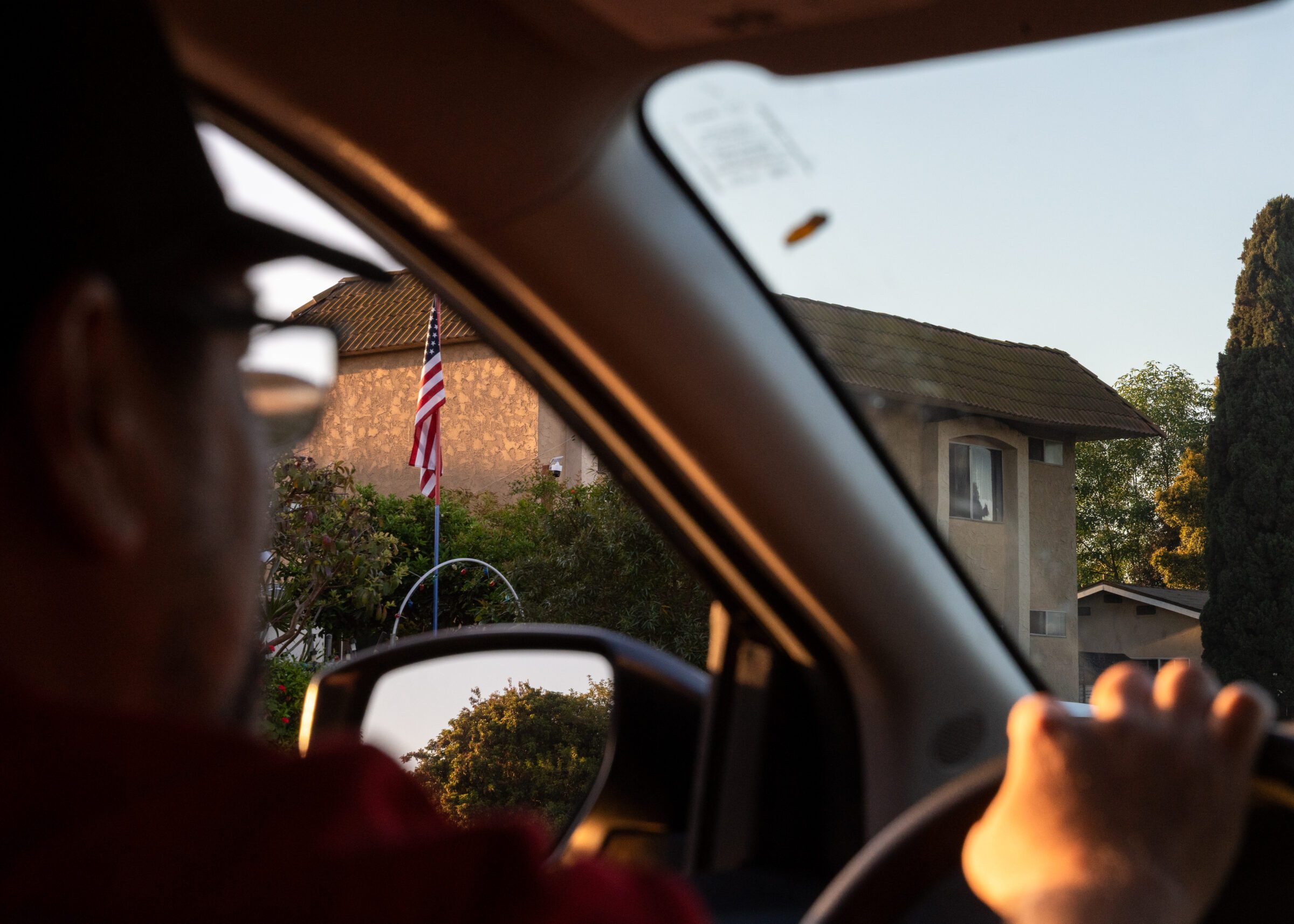
Despite the historical precedent, both Prado and Jasso acknowledged that Trump’s calls for mass deportations, including the possible deportation of U.S. citizens and the overall weaponization of the federal government to carry out policies, now put the country in new, uncertain territory.
“It’s much more aggressive and hostile,” Prado said. “We felt this huge assault coming out of the gate.”
The Trump administration has, in recent weeks, made attempts to move forward with even more expedited deportations under the Alien Enemies Act, undermining due process, even going as far as to argue undocumented immigrants should not be given a trial before removal. That’s why Prado feels it’s more important than ever for UdB to take up these community patrols.
“We all have a responsibility to be in solidarity with our working class brothers and sisters, who form part of the backbone of this economy, and not allow them to be persecuted, attacked, slandered, or harassed,” Prado said. “It’s really to build a concept of solidarity within working-class communities [and] make sure that they don’t feel that they’re alone in this struggle.”
Sign up and stay up-to-date
Support us
Bolts is a non-profit newsroom that relies on donations, and it takes resources to produce this work. If you appreciate our value, become a monthly donor or make a contribution.


